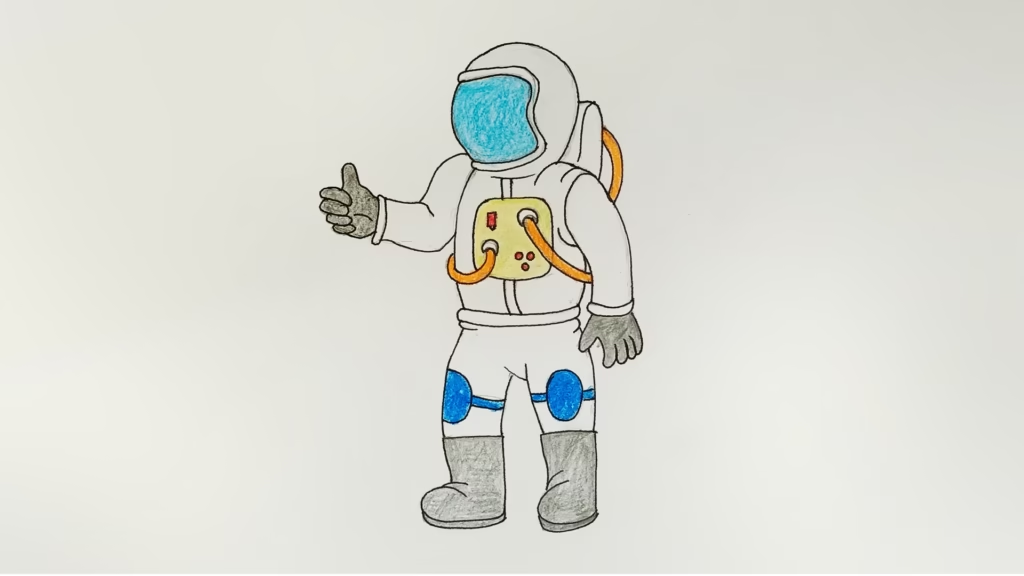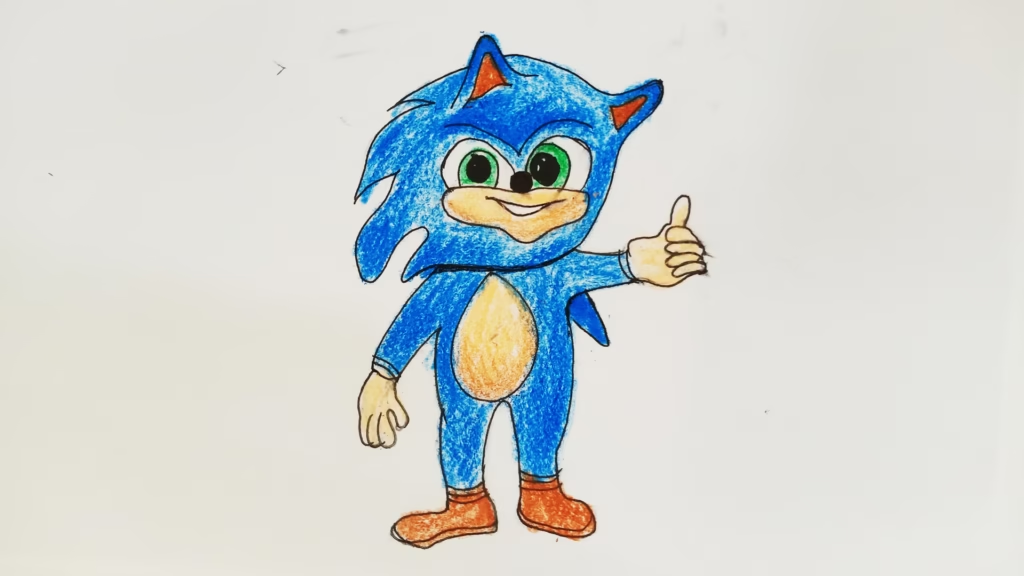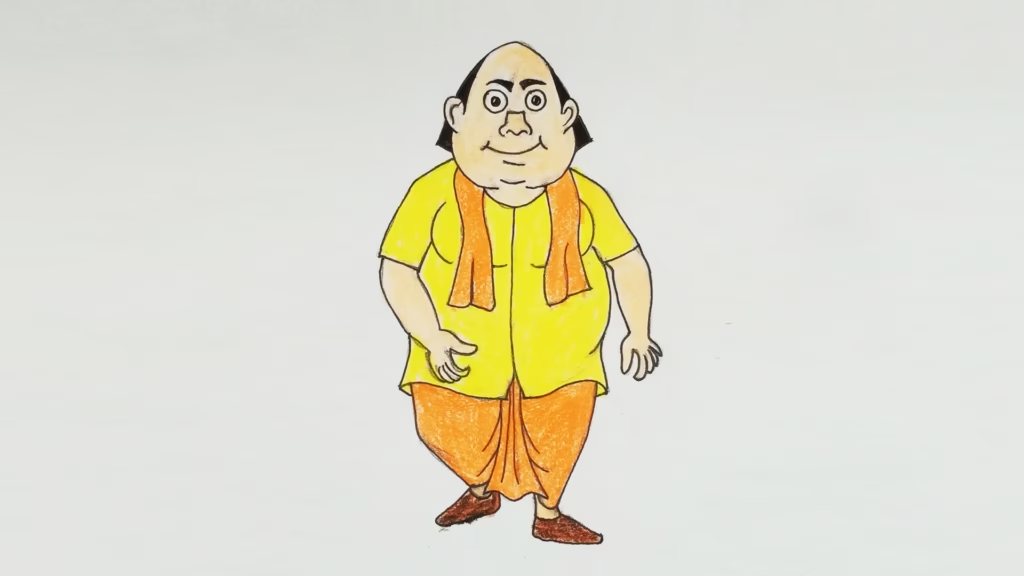Ever looked at a quirky cartoon character and thought, “I wish I could draw something like that”? Maybe you’ve doodled absentmindedly in notebooks, creating little stick figures with surprisingly expressive faces. Or perhaps you’re convinced you don’t have an artistic bone in your body. Well, I’m here to tell you something exciting: simple cartoon drawing is not just for a gifted few. It’s an accessible, joyful, and advantageous skill that anyone–yes, anyone–can learn and enjoy.
Forget the intimidating art classes, the pressure of photorealism, or the idea that you need expensive tools. Simple cartoon drawing is about embracing imperfection, finding fun in basic shapes, and unlocking a playful side of your creativity you might not even know you have. It’s about communication, expression, and pure, unadulterated fun. So, grab a pencil, a piece of paper (any paper!), and dive into the delightful universe of simple cartoon drawing.
Why Bother with Simple Cartoon Drawing? More Than Just Doodles!
You might be thinking, “Okay, it sounds fun, but what’s the point?” The benefits of engaging in simple cartoon drawing are surprisingly vast:
- Stress Buster Supreme: In our fast-paced world, finding moments of calm is crucial. The focused, gentle act of drawing simple cartoons can be incredibly meditative. It takes your mind off worries and anchors you in the present moment.
- Creativity Unleashed: Every time you transform a circle into a face or a squiggle into a wacky hairstyle, you’re flexing your creative muscles. This isn’t just about drawing; it’s about problem-solving and thinking outside the box in a low-stakes environment.
- Communication Power-Up: Sometimes, a simple cartoon can convey an emotion or idea more effectively than a paragraph of text. Think about emojis – they’re tiny cartoons! Learning simple cartoon drawing can enhance your visual communication skills.
- Pure, Unadulterated Fun: Let’s not forget the sheer joy of creation! Bringing a character to life, no matter how simple, is immensely satisfying. It’s play, and adults need play just as much as children do.
- A Foundation for More: While we’re focusing on simple cartoon drawing, the basic principles you learn – shape, line, expression – are foundational to all forms of art. Who knows where this journey might lead?

The Only Tools You Need (Hint: You Probably Have Them)
One of the biggest beauties of simple cartoon drawing is its accessibility. You don’t need a fancy art studio or expensive software.
- Pencil: Any old pencil will do. An HB pencil is a good all-rounder, but honestly, whatever you find in your junk drawer is fine to start.
- Paper: Printer paper, notebook paper, the back of an envelope – it all works.
- Eraser: Mistakes are part of the process! A good eraser is your friendly undo button.
- (Optional) Fine-liner Pen: Once you’re happy with a pencil sketch, going over it with a fine-liner can make your simple cartoon pop. But this is a “later” step.
- (Optional) Colors: Crayons, colored pencils, markers – if you want to add a splash of color, go for it! But start with black and white.
See? No major investment required. The barrier to entry for simple cartoon drawing is wonderfully low.
The Building Blocks: Shapes are Your Superpower!
At its heart, a simple cartoon drawing is about combining basic shapes. Think of them as your secret artistic LEGOs. The primary shapes you’ll use constantly are:
- Circles/Ovals: Perfect for heads, eyes, bodies of cute animals, and so much more.
- Squares/Rectangles: Great for bodies, buildings, robot parts, books.
- Triangles: Useful for noses, pointy hats, animal ears, beaks, teeth.
Practice drawing these shapes. Fill a page with circles of different sizes. Draw wobbly squares and elongated rectangles. Get comfortable with them. Then, start combining them. A circle on top of a rectangle? Instant, simple person! Two small circles inside a big one? You’ve got eyes on a face!
Let’s Get Drawing: Your First Simple Cartoon Steps

Ready to put pencil to paper? Let’s start with the absolute basics.
- The Expressive Circle (The Head):
- Draw a circle. Don’t worry if it’s not perfectly round. Wobbly circles have character!
- Eyes: Inside your circle, draw two smaller circles or dots for eyes. Where you place them changes the expression. Close together? Far apart? High up? Lowdown? Experiment!
- Mouth: A simple curve can be a smile or a frown. A small ‘o’ can show surprise. A straight line can be neutral or serious.
- Nose (Optional but Fun): A tiny curve, a dot, or a small triangle between the eyes and mouth.
- Play around! Draw a dozen circle-faces, each with slightly different eye placements and mouth shapes. See how much emotion you can convey with these simple elements. This is the core of simple cartoon drawing.
- Giving it a Body (The Shape Combo):
- Draw another circle head.
- Below it, draw a rectangle or an oval for the body. Connect it to the head with a short line or two for a neck (or just let them touch).
- Limbs (Stick Figure Style): For arms and legs, simple straight lines are perfectly fine! Add small circles for hands and ovals for feet if you’re feeling adventurous. Don’t worry about anatomy – cartooning is about suggestion and fun.
- Can your new character wave? Make one arm line go up! Are they running? Bend those leg lines!
- Bringing Simple Animals to Life:
- A Simple Cat:
- Head: Circle.
- Ears: Two triangles on top of the circle.
- Body: Oval, connected to the head.
- Legs: Four short lines or skinny rectangles coming down from the oval.
- Tail: A long, curved line.
- Face: Use the circle-face principles!
- A Simple Bird:
- Body: Teardrop shape (an oval that tapers to a point).
- Head: Small circle at the wider end of the teardrop.
- Beak: Small triangle.
- Eye: Dot.
- Wing: A leaf appendage on the side of the body.
- Legs: Two thin lines.
- A Simple Cat:
The key is to look at a subject (real or imagined) and mentally break it down into its simplest component shapes. This “seeing in shapes” is a fundamental skill in simple cartoon drawing.
Adding That Spark: Expression and Exaggeration
Cartoons are all about emotion and personality. Even the simplest cartoon drawing can be incredibly expressive.
- Eyebrows are Magic: Two simple lines above the eyes can change everything. Angled down towards the nose? Angry or determined. Raised? Surprised or questioning. One up, one down? Skeptical or mischievous.
- Mouth Shapes: We touched on this, but experiment widely. A wiggly line for nervousness, a wide, toothy grin for joy, a tiny dot for quiet contemplation.
- Exaggeration: This is where cartoons shine. Is your character surprised? Make their eyes HUGE. Are they sad? Make that frown extra droopy and maybe add a giant teardrop. Exaggeration amplifies emotion and makes your simple cartoons more engaging. Don’t be afraid to go over the top – it’s part of the fun!
Practice, Play, and Patience: The Three P’s of Progress
Like any skill, getting comfortable with simple cartoon drawing takes a little practice. But the emphasis here is on playful practice.
- Doodle Daily (or Regularly): Even 5-10 minutes of doodling simple shapes and faces each day will build your confidence and muscle memory.
- Don’t Aim for Perfection: Seriously. Let go of the idea that every line has to be perfect. Wobbly lines have charm. “Mistakes” can lead to happy accidents and new character ideas. The goal is enjoyment and expression, not a masterpiece for the Louvre.
- Copy (for Learning, Not Publishing): Look at simple cartoons you admire. Try to break down how the artist used shapes and lines. Try drawing them yourself. This isn’t about plagiarism; it’s about learning the language of cartooning.
- Observe the World: Look at people’s expressions. Notice the basic shapes in everyday objects. Your environment is a constant source of inspiration for simple cartoon drawing.
- Keep a Sketchbook: Even a cheap notebook will do. It’s your private space to experiment, make messes, and watch your skills grow. Date your drawings – it’s fun to look back!
Finding Your Unique Simple Cartoon Style

As you continue to practice and play, you’ll naturally start to develop your own little quirks and preferences. Maybe you love drawing characters with really big noses, or perhaps your style leans towards super-minimalist lines. This is your unique voice emerging!
- Experiment with Line Weight: Try making some lines thicker and some thinner to add visual interest.
- Play with Proportions: Huge heads on tiny bodies? Extra-long legs? This is a hallmark of cartooning.
- Develop Signature Features: Maybe your characters always have a certain type of eye or a particular way you draw hair.
Don’t force a style; let it evolve organically as you explore what you enjoy drawing. The more you engage in simple cartoon drawing, the more your personal touch will shine through.
Beyond the Basics: Where Could Simple Cartoon Drawing Take You?
Once you’re comfortable with the fundamentals, there are so many fun avenues to explore:
- Adding Color: Break out those crayons, markers, or colored pencils and bring your characters to life.
- Simple Storytelling: Can you draw a three-panel comic strip telling a tiny story? Even stick figures can have adventures!
- Character Design: Invent your recurring characters. What are their personalities? How would they react in different situations?
- Digital Drawing: If you’re curious, many free and paid apps for tablets and computers open up a whole new world of simple cartoon drawing.
The Most Important Step? Just Start.
The journey into simple cartoon drawing doesn’t begin with talent or expensive supplies. It begins with a single, simple line. It begins with the willingness to try, to play, and to embrace the joy of creating something from nothing.
So, put down this article for a moment. Pick up that pencil. Draw a wobbly circle. Give it some eyes and a smile. Congratulations – you’re already doing it! You’re engaging in the wonderful, accessible, and endlessly entertaining world of simple cartoon drawing. Welcome to the club. We’re happy to have you! Now, go fill some pages and have an absolute blast.



